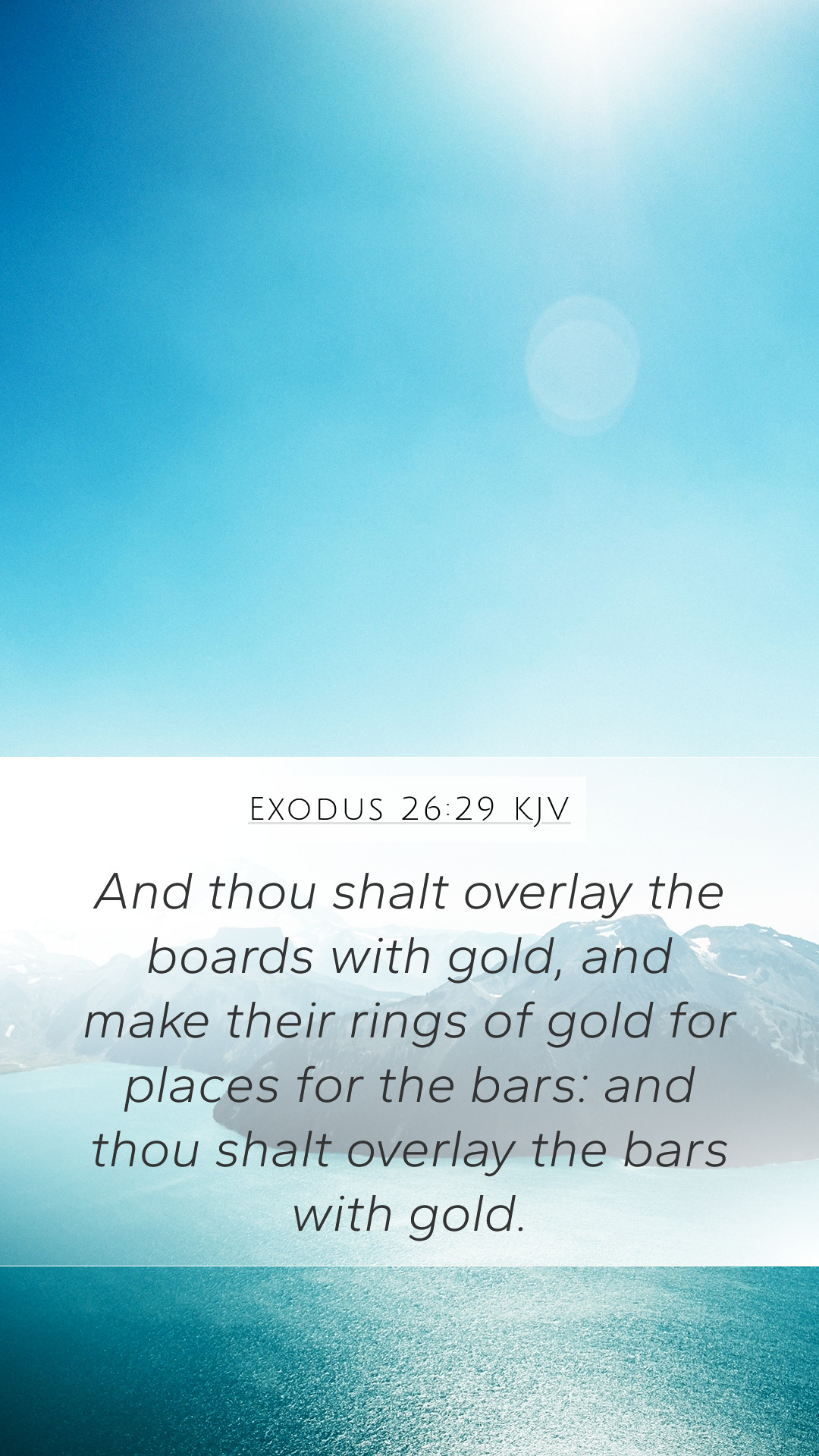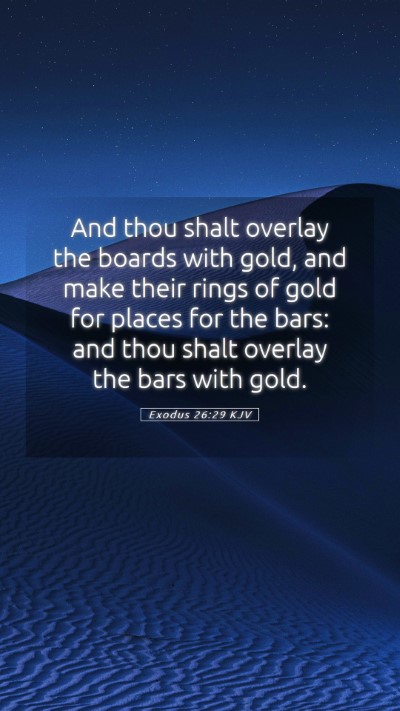Understanding Exodus 26:29
Bible Verse: Exodus 26:29
"And thou shalt make for the tabernacle a covering of rams' skins dyed red, and a covering above of badgers' skins."
Overview of Exodus 26:29
The verse describes the materials to be used in the construction of the Tabernacle, God's dwelling place among His people. The use of rams' skins dyed red and badgers' skins for covering highlights both the value and the divine protection associated with the Tabernacle.
Commentary Insights
-
Matthew Henry:
Henry emphasizes the significance of the rams' skins dyed red as a symbol of atonement and sacrifice. This color may also reflect the character of Christ's sacrifice, foreshadowing His redemptive work for humanity. Additionally, the badgers' skins represent protection against the elements, signifying that God's presence safeguards His people from harm.
-
Albert Barnes:
Barnes notes that the choice of materials signifies not only the beauty and durability of the Tabernacle but also presents a contrast between the inner sanctum and outer appearance. The rams' skins may symbolize the cost of purity, while the badgers' skins serve as a reminder of God's covering grace, shielding believers from judgment.
-
Adam Clarke:
Clarke elaborates on the practical aspects of the coverings, highlighting the necessity of protection in a harsh desert environment. He also discusses the significance of the Tabernacle as a portable sanctuary, illustrating God’s desire to dwell among His people in their journey, indicating His accessibility and presence in their lives.
Theological Significance
The coverings described in Exodus 26:29 hold deep theological implications. They portray the dual nature of Christ as both the sacred sacrifice and the protection over sinners. The verse foreshadows the necessity of Christ's blood, symbolized by the red dye of the rams' skins, and communicates God's desire to protect and dwell among His people through the Tabernacle.
Historical Context
Understanding the historical context of Exodus 26:29 is crucial for interpreting its meaning. The Israelites were transitioning from slavery in Egypt to freedom in the Promised Land. The Tabernacle served as a central place of worship, where God's presence would dwell among His people, establishing a divine covenant relationship.
Applications for Life
This passage encourages modern believers to seek God's presence in their lives. Just as the Tabernacle was a place for God's glory, Christians are called to be temples of the Holy Spirit, inviting God to dwell within them. The coverings invoke a reminder of sacrificial love and divine protection that believers experience through faith.
Cross References
- Exodus 25:8: "And let them make me a sanctuary; that I may dwell among them."
- Hebrews 9:11-12: "But Christ being come an high priest of good things to come, by a greater and more perfect tabernacle...by his own blood, he entered in once into the holy place, having obtained eternal redemption for us."
- 1 Corinthians 6:19: "What? know ye not that your body is the temple of the Holy Ghost which is in you, which ye have of God, and ye are not your own?"
Conclusion
The deeper meanings behind Exodus 26:29 unveil a rich tapestry of symbolism that encompasses themes of sacrifice, protection, and divine presence. As part of a broader narrative of God's relationship with His people, this verse not only sheds light on the construction of the Tabernacle but also invites readers to reflect on how to apply these truths in their spiritual journeys.
For those seeking bible verse meanings, bible verse interpretations, and bible study insights, Exodus 26:29 serves as a powerful reminder of God's commitment to dwell with and protect His followers.


